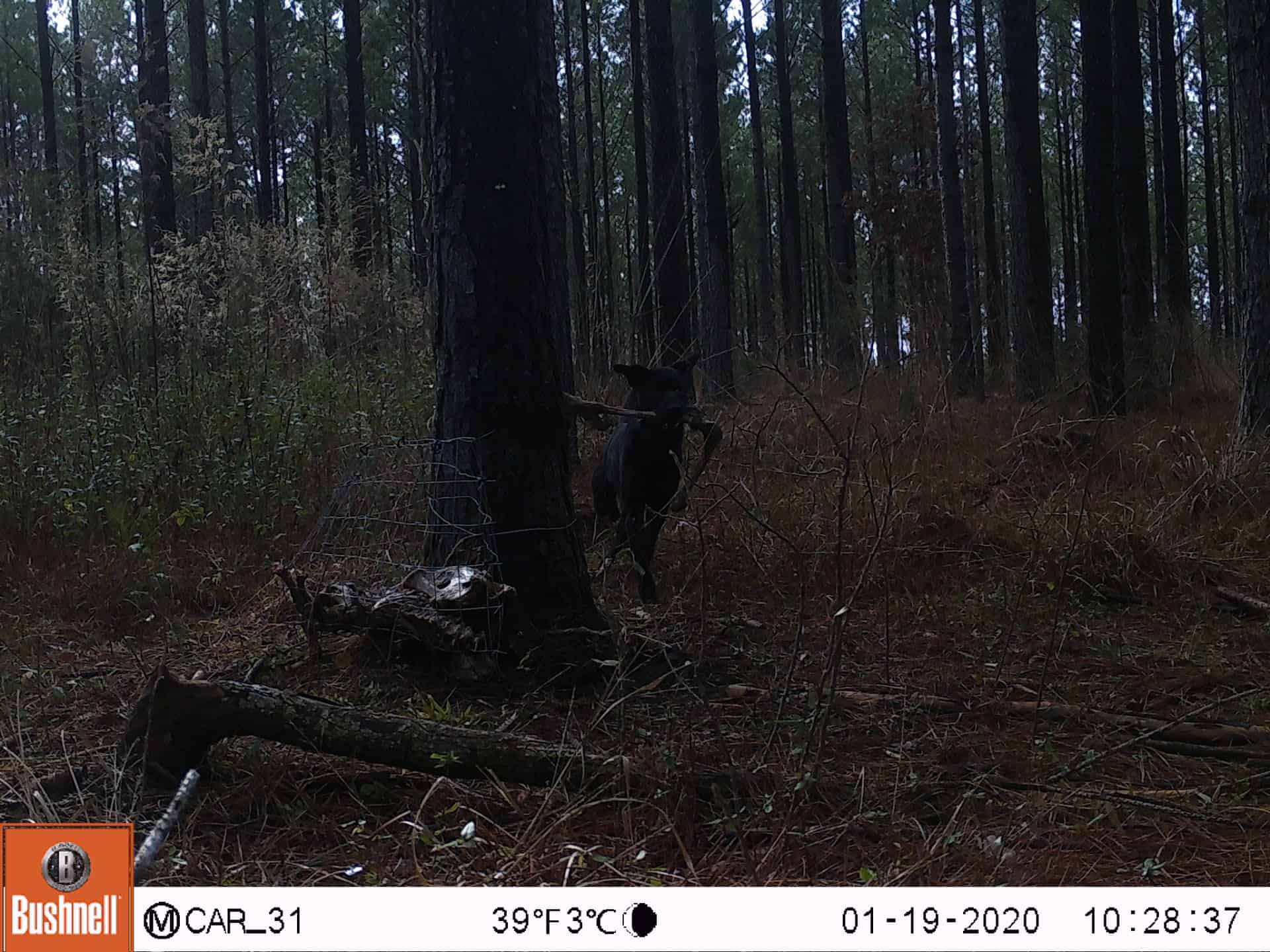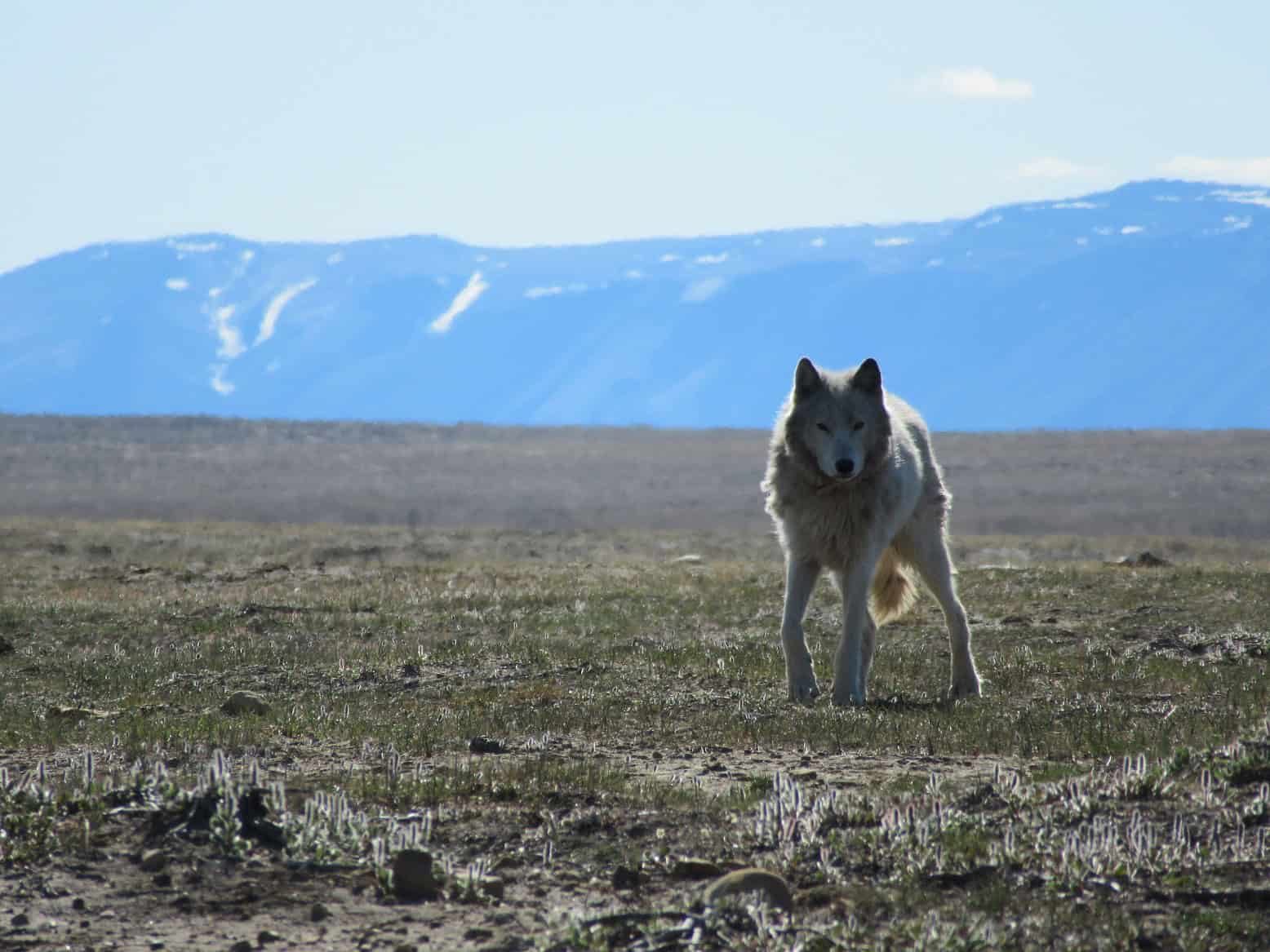Share this article
Wildlife Featured in this article
- coyote
- raccoon
- gray fox
- bobcat
Wild Cam: Coyote scavenging affects small carnivore behavior
Bobcats may act leery when coyotes have recently visited a gut pile
Coyote scavenging affects the behaviors of other carnivores that visit carcasses in parts of the Savannah River near Greenwood, South Carolina.
This reveals some of the ways that a novel apex predator can affect smaller scavengers in an area where large carnivores have been eliminated.
For a study published recently in Ecosphere, Alex Jensen, a postdoctoral researcher at the North Carolina Museum of Natural Sciences in Raleigh, and his colleagues placed 75 trail cameras across a variety of forest habitats in early 2020, and again in early 2021.
They pointed the cameras at carcasses left inside metal cages with small openings big enough to allow scavengers access to the meat. The carcasses—mostly bones, hides and guts—came from local businesses that process harvested deer carcasses for hunters.
“That was a little bit gross—on a warm day they would start smelling in the trash cans we had,” Jensen said.

The researchers watched the behavior of gray foxes (Urocyon cinereoargenteus), bobcats (Lynx rufus), opossums (Didelphis virginiana) and raccoons (Procyon lotor), paying attention to how many days it took these species to arrive at the carcasses. They also watched how other species behaved around the carcasses when coyotes (Canis lupus) had also visited in the past seven days.
Using data from 71 of the cameras, they found that coyotes were the most common mesocarnivores at the sites—they appeared at 90% of the sites during the study. Due to the extirpation of black bears (Ursus americanus), wolves (Canis lupus) and cougars (Puma concolor), coyotes are the largest carnivores in the area.
“[Coyotes] really only had a direct impact on bobcats,” said Jensen, who conducted this study while finishing his PhD at Clemson University in South Carolina.
The researchers found that bobcats spent less time at the carcasses that had seen coyote activity than they did at carcasses no coyotes had visited.
Jensen said that the surrounding habitats also seemed to affect bobcat behavior—the species didn’t feed at the carcasses surrounded by thick understory cover as much. “It seems like they felt the safest in open habitat,” he said.
The latter applied to all the mesocarnivores in the study—not just bobcats. These species seemed to avoid areas with lots of understory and presumably places for predators like coyotes to hide.
The researchers also found other trends among scavenging species. Raccoons, for example, located carcasses faster in mature forests, perhaps a function of this being their preferred habitat type.
Gray foxes also seemed to find carcasses faster when there were vultures around. The team thinks they might even cue into vulture activity to find carcasses in some cases.
Coyotes may sometimes be leery at carcasses. Nonetheless, they can usually scavenge on these carcasses without risk from larger predators like wolves or bears.
Jensen also said that the coyotes’ predilection for scavenging gut piles is suggestive of humans supplementing their diet.
“If you’re a deer hunter and don’t like coyotes, well you’re probably supplementing them by leaving these gut piles out,” he said.
This photo essay is part of an occasional series from The Wildlife Society featuring photos and video images of wildlife taken with camera traps and other equipment. Check out other entries in the series here. If you’re working on an interesting camera trap research project or one that has a series of good photos you’d like to share, email Josh at jlearn@wildlife.org.
Header Image: A black coyote scavenges at a gut pile in South Carolina. Credit: Jensen et al.








